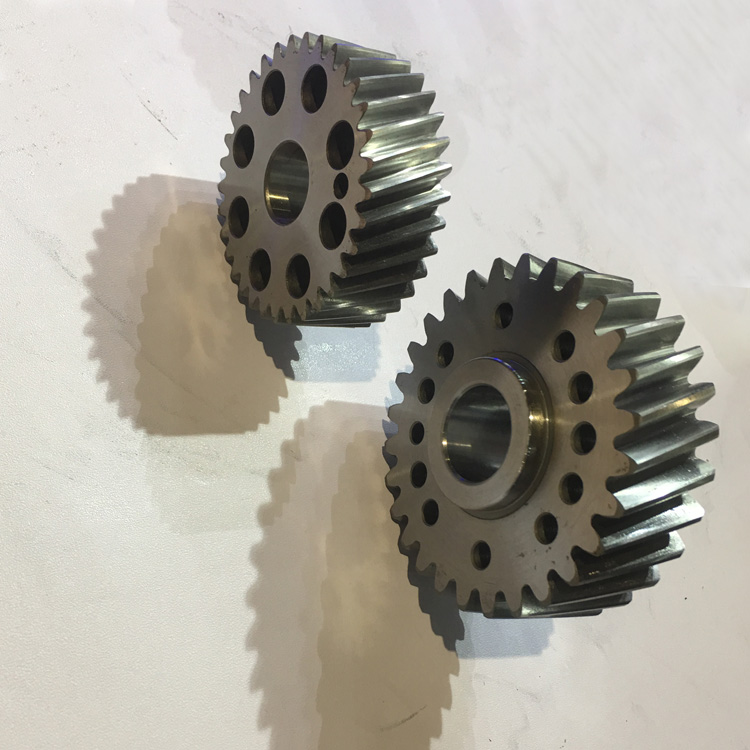|
|
Do you know what materials are needed for the production of gears and racks?Gears and racks belong to mechanical equipment components and play an indispensable role in our industrial production field, mainly carrying external forces and guidance. The products produced by Taiwan T-win have advantages such as high efficiency, accurate transmission ratio, and large power range! We are your trusted manufacturer, and below we will take you to learn about commonly used production materials.
The commonly used materials for gears and racks include forged steel, cast steel, cast iron, etc. Gears rely on structural dimensions, material strength to withstand loads, material strength to have strength, toughness, and wear resistance, gear shapes are complex, gear accuracy requirements, material processes, commonly used materials, forged steel, cast steel, cast iron, and forged steel. Hardness is divided into large categories, HB is called soft teeth, and HB is called hardness. Process forging, blank normalizing, rough turning, quenching and tempering, commonly used materials, SiMnCr, liquid dynamic and static pressure bearings, commonly used shaft shells, bearings, sealing types, precision bearings, rust prevention new processes between processes, bearing life enhancement 1、 Forged steel According to the hardness of the tooth surface, it can be divided into two categories. When HB<350, it is called a soft tooth surface. When H8>350, it is called a hard tooth surface 1. Tooth surface hardness HB<350 Process: Forging blank → Normalizing → Rough turning → Quenching and precision machining Features: It has good comprehensive performance, high strength and hardness on the tooth surface, and good toughness on the tooth core. After heat treatment, the cutting accuracy can reach level 8. Manufacturing is simple, economical, and has high productivity, with low precision requirements. 2. Tooth surface hardness HB>350 Process: Forging blank → Normalization → Rough cutting → Quenching and tempering → Fine cutting → High and medium ring quenching → Low temperature tempering+Gear honing or grinding agent running in, electric spark running in. Features: High tooth surface hardness HRC=48-55, high contact strength, and good wear resistance. The tooth core maintains the toughness after quenching and tempering, has good impact resistance, and high load-bearing capacity. The accuracy has decreased by half, reaching level 7 accuracy. Suitable for mass production, such as medium speed and medium load gearbox gears for automobiles, machine tools, etc. When using low-carbon steel: Forging blank one → Normalization → Rough cutting → Quenching and tempering → Fine cutting → Carburization and quenching ->Low temperature tempering ->Gear grinding. Reaching levels 6 and 7. Common materials; 20Cr, 20CrMTi, 20MnB, 20CrMnTo. Features: Tooth surface hardness and strong load-bearing capacity. The core has good toughness and is resistant to impact. Suitable for high-speed, heavy-duty, overload transmission or compact structural requirements, locomotive main transmission gears, aviation gears. 2、 Cast steel When the gear diameter d>400mm, the structure is complex, and forging is difficult, cast steel can be used. Materials 2ZG45 and ZG55, normalized treatment. 3、 Cast iron Strong resistance to adhesion and pitting, but poor impact and wear resistance. Suitable for stable work, low power, low speed, or large and complex shapes. It can work under the condition of oil shortage and is suitable for open transmission. 4、 Non metallic materials Made of fabric, wood, plastic, nylon, suitable for high-speed light loads. When selecting materials, consideration should be given to the different working conditions of gears and the different forms of tooth failure, which are the basis for determining the calculation criteria of gear strength and selecting materials and heat treatment. For gear teeth that are prone to breakage under impact loads, materials with good toughness should be selected, and low-carbon steel carburizing and quenching can be used. For high-speed closed transmission, the tooth surface is prone to pitting corrosion, and materials with better tooth surface hardness should be selected. Medium carbon steel surface quenching can be used. When low-speed medium load, tooth breakage, pitting, and wear can all occur, materials with good comprehensive mechanical properties such as mechanical strength and tooth surface hardness should be selected, and carbon steel can be selected for quenching, tempering, and precision cutting. 4. Strive for a small variety of materials, facilitate management, and consider resource and supply conditions. When the structural dimensions require compactness and high wear resistance, alloy steel should be used. 6. Equipment and technical situation of the manufacturing unit. Have you understood the commonly used materials and their respective characteristics after reading the above content? In the manufacturing and production of gears and racks, some gears with special performance requirements will also be encountered. Designers must follow the basic principles of material selection, conduct comprehensive analysis and consideration, and select suitable materials and heat treatment processes. |






